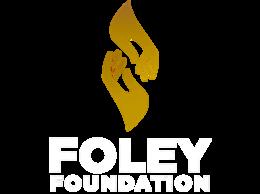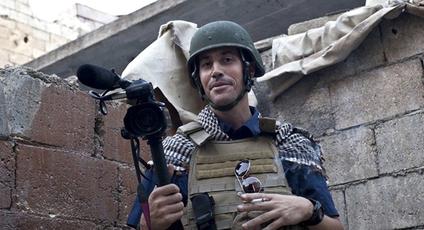Safety Guide for Student Newsrooms

1 3
2 Community in the Newsroom Field Reporting Safety Social Media Safety Legal Issues
4


1 3
2 Community in the Newsroom Field Reporting Safety Social Media Safety Legal Issues
4
Creating a safe and inclusive newsroom requires trust and respect. There are many ways to build community. To start with, all newsrooms should center respect and transparency in their approach. Here are some tips to develop community in the newsroom:
2 3 4 5 1
Recognizing each member’s identity and agency in the newsroom is crucial in creating a newsroom with a well-rounded diversity of thought. Newsrooms should consider implementing a zero-tolerance policy for discrimination and harassment.
Student newsrooms are not generally heavily staffed so there may be a feeling of familiarity. While this tight-knit bond can be beneficial for professional team building, it can also lead to complications when issues do arise. Create a mechanism for staff to share concerns to help prevent or minimize these issues.
Make funding, staff, stakeholder, and newsroom processes transparent. A FAQ sheet should be made available to the whole newsroom. In addition, staff members should have a contact/mentor they feel comfortable reaching out to on a personal level. Mentorship helps team members adjust to the newsroom and offers opportunities for growth.
Social gatherings, networking events, and annual celebrations can make staff feel included. Large or small group settings help build relationships.
Being a student journalist is taxing, both mentally and physically. Take care of yourself and check in on others to help create a community unafraid of vulnerability and honesty.

Increased reliance on social media and online sites for news and entertainment may put journalists in a vulnerable position. While journalists may use social media to promote their own stories and to shine a light on important reporting, there is also the potential for online abuse. For student publications, the potential for harassment can be even more dangerous because student publications often do not have the same protections or guidelines as established news outlets.
Five steps to protect yourself online:
1 2 3 4 5
Go through this check-list (from IWMF) on protecting staff data.
Educate newsroom staff about the prevalence of online harassment of journalists. Harassment may differ for female journalists, journalists of color, LGBTQ+ journalists, and student journalists.
Make clear who staff should contact if they do experience online harassment. Consider creating an anonymous form to share concerns or experiences with online harassment.
Create a guide for staff to reference that includes available resources (a data protection checklist, escalation policy, anonymous form, place to document abuse, online violence risk assessment, etc.)
On personal social media accounts, be aware of taking stances on contentious issues, sharing too much personal information, and posting compromising images.
When reporting in-person, whether at a low-risk event like a book reading or sporting event or a higher-risk event like a riot or protest, it is essential to practice safe field reporting tactics. In-person coverage offers many benefits, but also includes more risk. Think through potential threats to help minimize risk.
Perform a risk assessment to identify, predict, and mitigate risk. Make this a habit.
When able, visit the site beforehand and consider an exit strategy. Do not go alone unless absolutely necessary. Inform colleagues, friends, and/or family about your assignment and location. Dress appropriately. Bring protective gear and equipment, when necessary.
Stay vigilant and aware of your surroundings. Report from populated areas, and avoid seclusion. If you fear for your safety, leave. Your safety is worth more than a story.
Reflect on the event, and check in on yourself
Share your experience with a trusted friend/colleague
Make notes for future events

Avoiding legal predicaments requires establishing best practices in the newsroom. Whether that means doing outside research, taking classes on media law, and/or talking with experts, the more you know, the better. Here are some measures to take:

Familiarize yourself with legal terms to understand journalists’ rights and protections. Some important terms include:
A Libel
B. FOIA
C. Shield law
D. First ammedment
E Copyright laws If offered, taking a class like media law can be beneficial.
Ethics create the backbone of solid reporting. Ethical journalism also protects the journalist and the publication when it comes to avoiding legal issues and developing solid reputations. There are many scenarios in which a student journalist may find themselves in an ethical dilemma. Reviewing SPJ’s Code of Ethics is a great place to start When ethical concerns arise, be sure to reach out to a professor, faculty advisor, or newsroom manager.
Before publishing a story, make sure the story goes through multiple rounds of edits, including in-depth fact checks. Publishing errors, especially about sources and real-life people, may lead to legal trouble. Careful editing and fact checking will help prevent this Check out this guide from the Newmark JSchool Research Center on fact checking.

To advocate for American hostages and wrongful detainees held abroad and promote journalist safety.
We Advocate: To reunite American hostages with their families, we work directly with government officials, pro bono partners, and victims to end their ordeal.
We Investigate: To hold leaders to their sacred obligation to resolve the injustice of hostage-taking and ensure captors are held accountable for their crimes, we conduct independent, nonpartisan research.
We Educate: To prevent future hostage-taking, we develop and share tools that help journalists, aid workers, and all Americans to stay safe abroad.
Inspired by Jim Foley, we seek to encourage and empower all to act with moral conviction – one person at a time for the good of others.
We empathize with and help hostage families confidentially: listening, identifying the resources they need and the obstacles they face, while advocating for their loved ones’ swift return.
We are committed to resolving the injustice of hostage-taking through research and advocacy that shape policies to deter captors and hold them accountable.
James W. Foley was an American educator, humanitarian, and independent conflict journalist who was kidnapped in 2012 while reporting in Syria. He was murdered by ISIS in 2014.

A special thank you to past Foley Fellows TJ Dysart, Sophia Tiedge, and Sofie Hanrahan from Marquette University’s Diederich College of Communication for creating this safety guide.
For additional information, visit the Foley Foundation website.